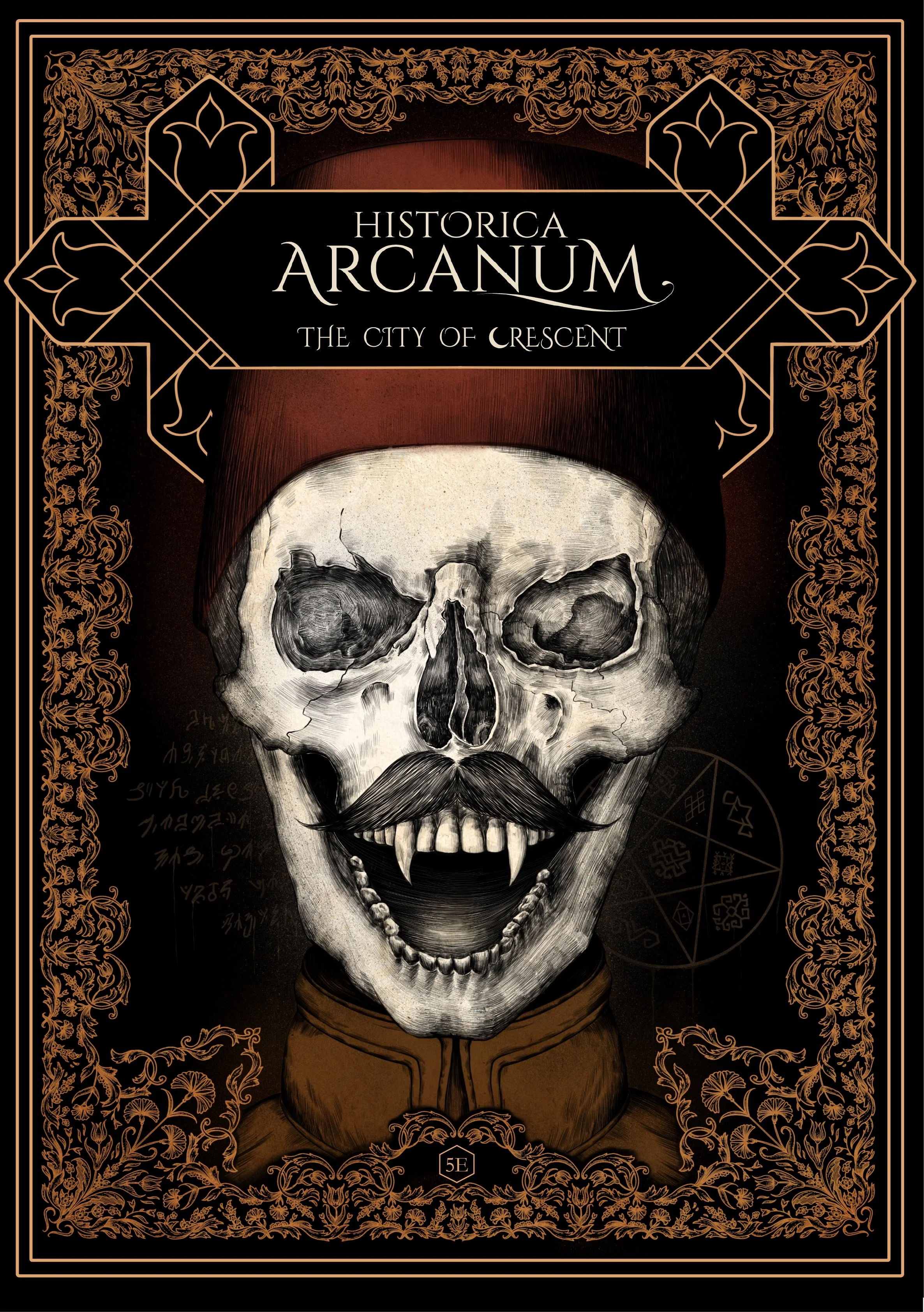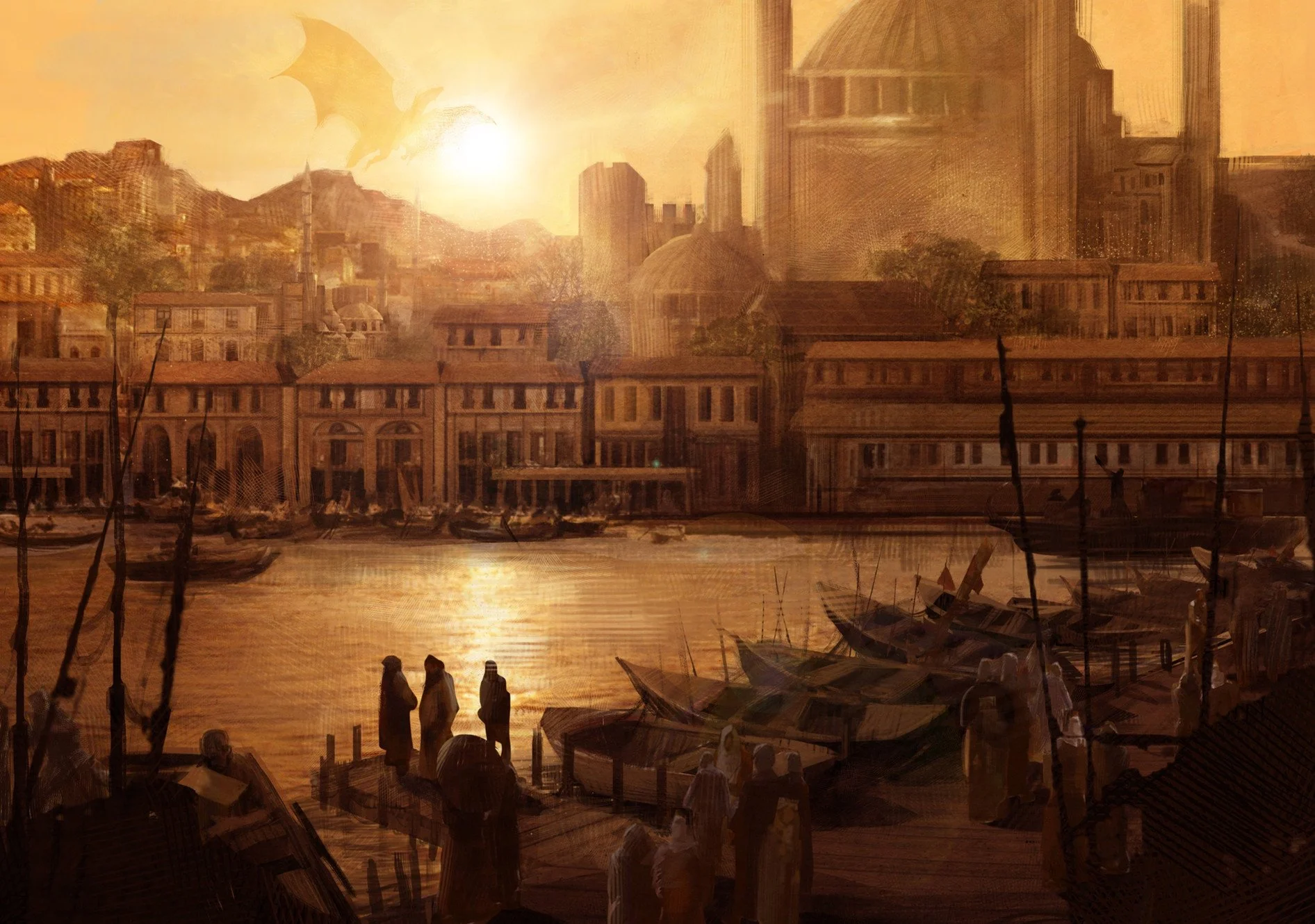Review: Historica Arcanum: City of Crescent , Magic and Monsters Meet Mythical Istanbul
By Leon Sandler
Since the publication of its first edition in 1974 Dungeons and Dragons (D&D) has become one of the most emblematic elements of geek culture. Tabletop roleplaying games (TTRPGs) like D&D can best be thought of as a kind of “interactive storytelling.” Each player takes on the persona of a unique fantasy character. Using imagination, improvisation, and dice rolls coupled with their character’s abilities, players work together to explore the world set out by a Dungeon Master (DM) who acts as the story’s referee and facilitator. During a typical D&D campaign, players might expect to battle deadly monsters, solve arcane mysteries, infiltrate guarded fortresses, or form cunning alliances. The game can grow to encompass virtually anything the players can imagine, while its focus on improvisation and character interaction guarantees that each story is unique.
Now in its fifth edition (5E), D&D is enjoying something of a cultural renaissance. Portrayals on popular TV shows like Stranger Things and The Big Bang Theory have lead to a surge in sales of the core rulebooks. The pandemic also lead many people -- perhaps craving a bit of escapism -- to start D&D campaigns on platforms like Zoom and Discord. Today, D&D boasts the most players in its entire history, with a growing number connecting digitally around the world. This international fan community has been hard at work creating material to make the game their own. Since their earliest iterations, TTRPGs like D&D have thrived on content created by players to expand, customize, or even amend the dynamics of the game It’s no surprise, then, that the internet era has seen thousands of small creators from around the world have established a burgeoning indie publishing scene to share adventures, supplementary materials, and even new TTRPG systems.
In 2022, Istanbul’s Metis Creative studio released Historica Arcanum: City of the Crescent, a new roleplaying game setting using the 5E system. While most TTRPG settings like Forgotten Realms and Greyhawk invite players into a fairly predictable Western high-fantasy, Historica Arcanum is rooted in the genre of alternate history fantasy. As such, it mixes its monsters and magic with the historical facts of the Ottoman Empire. At the center of this fantasy world is the Istanbul of the 1800s.
Chapter I contains a wealth of information about the mythical origins of this world and the djinn, elves, orcs, gnomes, and others who inhabit it -- all uniquely adapted to this newly-imagined version of the 19th Century. The section titled “Running a Story in Istanbul” in particular is full of information about the City: its history, development, economy, class structure, and more. Players are also introduced to a number of useful historical morsels like Ottoman imperial titles and even a set of slang terms commonly used in the City by its Turkish, Greek, Jewish, or French residents. All of these details help the fantasy world of Historica Arcanum feel realistically grounded in 19th Century Ottoman culture, allowing players to bring this remarkable location into their adventures.
Chapter II provides all of the necessary step-by-step information for players to create their own characters for adventures in Historica Arcanum. The character classes, equipment, and spells are again designed to distinctly reflect the Ottoman setting. Whereas in a typical D&D game, a player’s character might be an elf wizard or orc barbarian, Historica Arcanum provides the rules to play an Istanbul street-tough, an Ottoman court spy, or a stargazer who uses the powers of the zodiac to cast spells. Characters are also created with a background and profession, ensuring that each will be truly unique. Using a series of dice rolls, I randomized the character creation process. I created a wealthy human warlock who is able to summon and command djinn, armed with an amulet and a flamethrower of Greek Fire. I decided that my warlock was an Ottoman scholar by trade, secretive and devoted to acquiring arcane secrets. Finally, I named him Theodoros and gave him the gear associated with his lifestyle. Now my character, Theodoros, is ready to join a team of other player characters as we explore the City.
Chapter III includes a detailed 120-page adventure for a group of 3-6 player characters. Spanning four acts, this adventure is especially written to showcase the City’s locations and immerse players in its atmosphere. The players’ characters are invited by their benefactor Osman Hamdi Bey to witness the crowning of Sultan Abdulmejid I. While I don’t want to spoil the plot of the adventure for any would-be players, I will simply say that the player characters are first tasked with recovering an important journal. As the story unfolds, the players will traverse Istanbul from the depths of the undercity, through the winding passages of the Grand Bazaar, and past the opulence of Topkapi Palace. They will encounter rival factions, battle monsters, and make decisions that will change the fate of the City forever. In doing so, players will meet a colorful cast of non-player characters, each of whom has their own motives (including, of course, a guild of mystical cats). This adventure contains plenty of well-organized material, making it easy for any new DMs to conduct the story for their players.
Overall, Historica Arcanum: City of the Crescent is a remarkably well-crafted book. The stunning artwork perfectly evokes the world its creators imagined. Small details like the Turkish miniature art pattern on the page borders show the level of care that went into every aspect of this game’s design. The team at Metis Creative also decided to incorporate many additional components that enhance the sense of immersion. These include a series of gameplay soundtrack playlists accessible via QR code and an alternate history creation toolbox in chapter IV. Chapter V even includes a cookbook for any players who want to make cooking delicious Turkish food one of their character’s skills. All of this makes the book extremely worthwhile for any fan of fantasy who is interested in crafting stories in an Ottoman setting. The sheer wealth of gorgeous artwork and information in this volume make it a pleasure to read even on one’s own. However, the full experience can only be had by gathering a group of friends and delving into the City together.
*
Leon Sandler is a freelance writer, independent scholar, and researcher. He has also been known to slay foes as a mighty undead necromancer.




